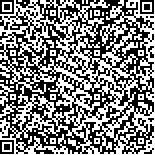| 摘要: |
| [摘要] 目的 探讨机器人辅助下高选择穿刺技术在经皮穿刺椎体成形术(PVP)中的应用效果。方法 回顾性分析2020年7月至2022年1月北京市海淀医院收治的70例骨质疏松性椎体压缩骨折患者的临床资料。患者均行PVP,根据辅助治疗方式的不同将其分为观察组(机器人辅助,35例)和对照组(C臂透视辅助,35例)。比较两组手术相关指标,术前和术后视觉疼痛模拟量表(VAS)评分、腰椎Oswestry功能障碍指数(ODI)评分、日本骨科协会(JOA)评分、椎体Cobb角,住院时间,术后并发症发生情况。结果 观察组术中透视次数、隐性失血量少于对照组,手术时间短于对照组,差异均有统计学意义(P<0.05)。术后两组VAS评分、ODI评分均低于术前,JOA评分高于术前,椎体Cobb角小于术前,差异均有统计学意义(P<0.05)。术后观察组VAS评分、ODI评分低于对照组,JOA评分高于对照组,椎体Cobb角小于对照组,差异均有统计学意义(P<0.05)。观察组并发症发生率低于对照组,住院时间短于对照组,差异均有统计学意义(P<0.05)。结论 骨质疏松性椎体压缩骨折患者选择机器人辅助下高选择穿刺技术进行PVP,有助于手术顺利进行,改善患者的腰椎功能,降低腰痛对患者正常生活的影响,且手术安全性较高,值得推广。 |
| 关键词: 机器人辅助 经皮穿刺椎体成形术 临床效果 |
| DOI:10.3969/j.issn.1674-3806.2024.02.06 |
| 分类号:R 687.3 |
| 基金项目:北京市自然科学基金-海淀原始创新联合基金资助项目(编号:L212055) |
|
| Application effect of robot-assisted high-selection puncture technique in percutaneous vertebroplasty |
|
SHI Yan, WEI Zhiling, MENG Lingxin, SONG Huawei
|
|
Department of Orthopedics, Beijing Haidian Hospital, Beijing 100080, China
|
| Abstract: |
| [Abstract] Objective To explore the application effect of robot-assisted high-selection puncture technique in percutaneous vertebroplasty. Methods The clinical data of 70 patients with osteoporotic vertebral compression fracture who were admitted to Beijing Haidian Hospital from July 2020 to January 2022 were retrospectively analyzed. All the patients underwent percutaneous vertebroplasty(PVP) and were divided into observation group(robot-assisted, 35 cases) and control group(C-arm fluoroscopy-assisted, 35 cases) according to different adjuvant treatment methods. The operation-related indicators, preoperative and postoperative pain Visual Analogue Scale(VAS) scores, lumbar Oswestry Disability Index(ODI) scores, Japanese Orthopaedic Association(JOA) scores, vertebral Cobb angle, length of hospital stay, and postoperative complications were compared between the two groups. Results The intraoperative fluoroscopy times and invisible blood loss in the observation group were less than those in the control group, and the operation time in the observation group was shorter than that in the control group, and the differences were statistically significant(P<0.05). Compared with those in the two groups before operation, the VAS scores and ODI scores were low, and the JOA scores were high, and the Cobb angle of vertebral body was small after operation, and the differences were statistically significant(P<0.05). After operation, the VAS scores and ODI scores in the observation group were lower than those in the control group, and the JOA scores in the observation group were higher than those in the control group, and the Cobb angle of vertebral body in the observation group was smaller than that in the control group, and the differences were statistically significant(P<0.05). The incidence rate of complications in the observation group was lower than that in the control group, and the length of hospital stay in the observation group was shorter than that in the control group, and the differences were statistically significant(P<0.05). Conclusion For patients with osteoporotic vertebral compression fracture, robot-assisted high-selection puncture technique can be chosen for performing PVP on them and helps the operation go smoothly, improves the lumbar function of the patients, reduces the impact of low back pain on the patients′ normal life, and the safety of the operation is relatively high. This method is worthy of promotion. |
| Key words: Robot-assisted Percutaneous vertebroplasty(PVP) Clinical effect |

